Semi-guided elk hunts offer a balanced approach, combining professional support with hunter independence, providing structured guidance while allowing adventurers to connect with nature and challenge themselves․
What are Semi-Guided Elk Hunts?
Semi-guided elk hunts are a hybrid of guided and DIY hunting experiences, offering a balance of professional support and personal freedom․ Hunters are provided with essential resources such as scouted locations, equipment, and tactical advice, but they are not accompanied by a guide at all times․ This format allows hunters to manage their own schedule and make key decisions during the hunt․ It’s ideal for those with some experience who want to test their skills while still benefiting from expert insights and logistical support․ The goal is to enhance success rates while fostering a sense of independence and adventure․
Why Choose Semi-Guided Elk Hunts?
Semi-guided elk hunts are ideal for hunters seeking a mix of independence and expert support․ They provide access to scouted locations, essential gear, and tactical advice, while allowing hunters to manage their own schedule and make key decisions; This format is cost-effective compared to fully guided hunts and offers flexibility for experienced hunters․ It’s also a great option for those looking to refine their skills or gain confidence in the field․ The balance of guidance and autonomy makes semi-guided elk hunts a popular choice for adventurers seeking both challenge and success․

Differences Between Fully Guided, Semi-Guided, and DIY Elk Hunts
Fully guided hunts offer extensive support, including gear and expertise, while semi-guided provide limited assistance, and DIY hunts require full independence, catering to varying skill levels and preferences․
Fully Guided vs․ Semi-Guided Elk Hunts
Fully guided elk hunts provide comprehensive support, including experienced guides, equipment, and logistics, ensuring a structured and hands-on experience for hunters of all skill levels․ In contrast, semi-guided hunts offer limited guidance, such as pre-scouted locations and basic instruction, allowing hunters more independence․ Fully guided hunts are ideal for novices or those seeking a stress-free adventure, while semi-guided hunts appeal to experienced hunters who desire autonomy but still need some professional insight․ Both options cater to different preferences and expertise levels, ensuring a tailored hunting experience․
Semi-Guided vs․ DIY Elk Hunts
Semi-guided elk hunts provide essential support, such as pre-scouted locations, basic equipment, and minimal guidance, while DIY (do-it-yourself) hunts require hunters to handle all planning, permits, and logistics independently․ Semi-guided hunts are ideal for those who want some professional insight without constant supervision, whereas DIY hunts appeal to experienced hunters seeking complete autonomy․ The key difference lies in the level of involvement and responsibility, with semi-guided offering a middle ground between fully guided and entirely self-managed hunting experiences․
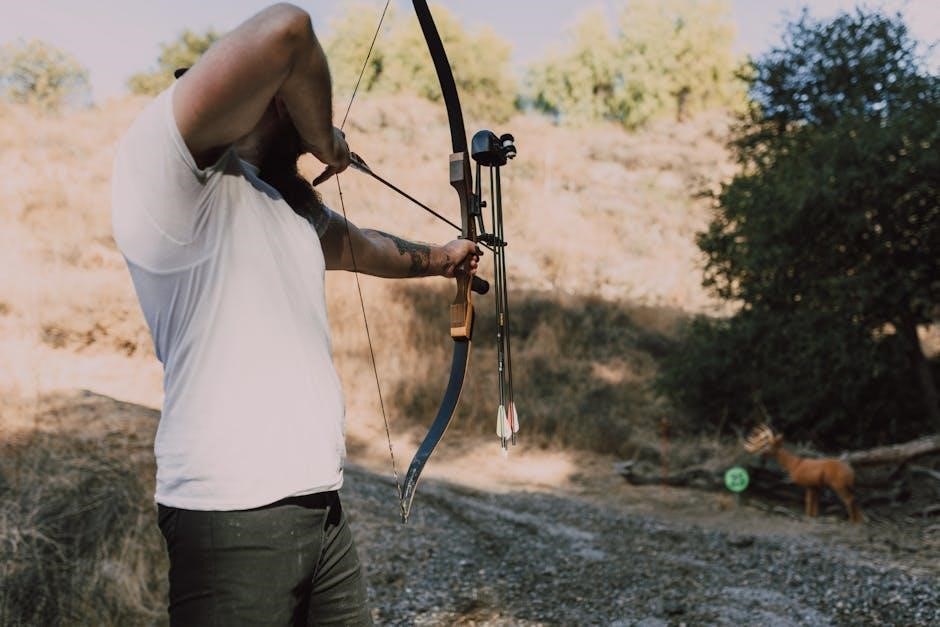
How to Choose the Right Outfitter for a Semi-Guided Elk Hunt
Choosing the right outfitter for a semi-guided elk hunt involves researching reputation, experience, and success rates․ Check reviews, ensure proper licensing, and align expectations with their services․
Researching Reputable Outfitters
Researching reputable outfitters for semi-guided elk hunts involves evaluating their experience, success rates, and customer reviews․ Look for outfitters with a strong track record and proper licensing․ Check online testimonials and ask for references to ensure reliability․ Verify their knowledge of the hunting area and familiarity with local elk behavior; Ensure they offer transparent communication about services and expectations․ A reputable outfitter will provide a balance of guidance and independence, enhancing your hunting experience․ Asking detailed questions and comparing multiple outfitters can help you make an informed decision․
Understanding the Services Included
Understanding the services included in a semi-guided elk hunt is crucial for a successful experience․ Typically, these packages provide access to pre-scouted hunting areas, stand or blind placement, and basic guidance on elk behavior and strategies․ Outfitters often offer essential equipment like treestands or ground blinds, and may include transportation to and from hunting locations․ Some packages may also cover meal preparation or lodging, while others focus solely on the hunt․ Clarify what’s included to ensure alignment with your needs and expectations for the adventure․
Evaluating Success Rates and Reviews
Evaluating success rates and reviews is essential when selecting an outfitter for a semi-guided elk hunt․ Look for historical data on harvest success and client testimonials to gauge performance․ Reviews from multiple sources, such as forums, websites, and social media, provide insights into the outfitter’s reliability and quality․ Pay attention to consistency in feedback and be wary of outfitters with predominantly negative reviews․ High success rates and positive testimonials indicate a reputable service․ Always ask for references and ensure the outfitter is transparent about their track record and hunting strategies․

Preparation for a Semi-Guided Elk Hunt
Preparation for a semi-guided elk hunt includes building physical stamina, gathering essential gear and strategies, and developing mental toughness for a safe and successful hunting experience․
Physical Conditioning and Fitness Requirements
Physical conditioning is crucial for semi-guided elk hunts, as hunters often face rugged terrain, steep climbs, and long hikes․ Building cardiovascular endurance and muscular strength is essential․ Hunters should engage in regular cardio exercises like running, cycling, or hiking to improve stamina․ Strength training, including squats and lunges, helps with carrying heavy gear․ Practicing with a loaded backpack (30-50 pounds) simulates hunt conditions․ Starting a fitness regimen 3-6 months in advance ensures readiness for the demands of the hunt, enabling hunters to navigate challenging landscapes effectively and safely․
Essential Gear and Equipment
For a successful semi-guided elk hunt, having the right gear is vital․ A reliable rifle or bow, paired with high-quality optics, is essential for accurate shots․ Durable, camouflage clothing and layered waterproof gear help hunters blend in and withstand harsh weather․ A sturdy backpack with compartments organizes supplies like calls, scents, and snacks․ Navigation tools like GPS devices or maps ensure hunters stay on track․ Bringing a first aid kit, headlamp, and extra batteries is crucial for safety and preparedness․ Proper gear ensures hunters are equipped to handle the challenges of the hunt effectively․
Mental Preparation and Mindset
Mental preparation is crucial for a successful semi-guided elk hunt․ Hunters must cultivate focus, resilience, and patience to navigate challenging terrain and unpredictable elk behavior․ Visualization techniques can help build confidence, while understanding the physical demands ensures a positive mindset․ Staying adaptable and open to guidance is key, as conditions may require quick decision-making․ A strong work ethic and respect for nature and the animal are essential․ Maintaining a positive attitude, even in tough moments, will enhance the overall hunting experience and contribute to a memorable adventure․
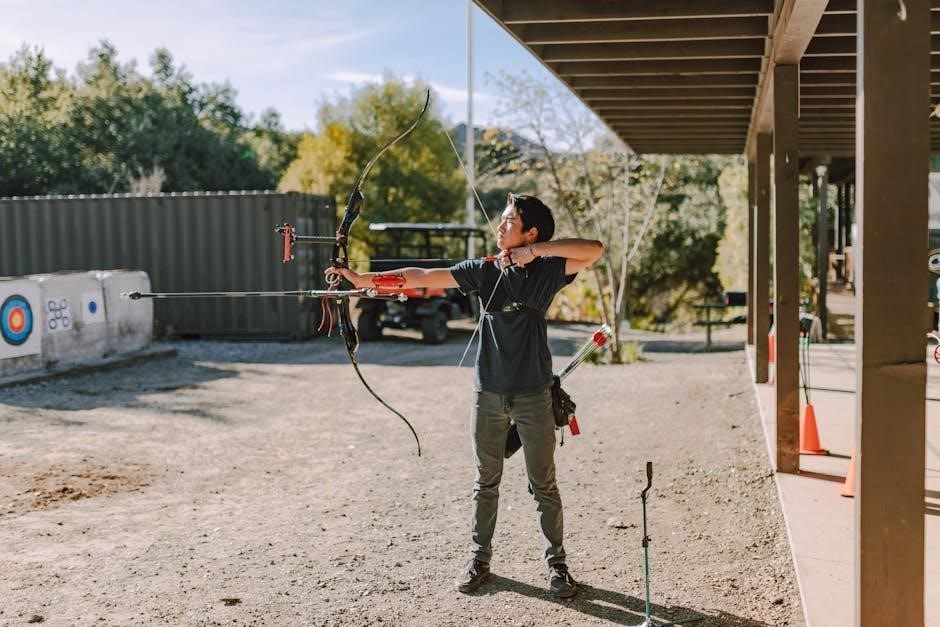
The Hunt Itself: Strategies and Tactics
Semi-guided elk hunts require understanding elk behavior, effective calling, and precise stalking․ Hunters must combine physical endurance with mental focus to execute strategies successfully in the field․
Elk Behavior and Habitat
Elk are highly adaptable creatures, thriving in diverse terrains from dense forests to open meadows and mountainous regions․ They are social animals, often forming large herds, especially during specific seasons․ Dominant bulls lead the herd, particularly during mating season, showcasing their strength through vocalizations and displays․ Elk migrate seasonally to find food and shelter, relying on their keen senses to navigate and avoid predators․ Understanding their habitat preferences, such as areas with abundant vegetation and water sources, is crucial for successful semi-guided elk hunts, as it helps hunters and guides locate and track these majestic animals effectively in their natural environments․
Calling and Communication Strategies
Effective calling is a cornerstone of semi-guided elk hunts, requiring a deep understanding of elk vocalizations and behavior․ Hunters use calls like bugles, cow calls, and calf distress sounds to mimic elk communication, attracting bulls during the rut․ Guides often provide expert instruction on timing and tone to ensure authenticity․ Decoy strategies may also be employed to complement calls, creating a realistic scenario․ Proper calling not only locates elk but also engages them, drawing them closer for a shot․ Mastery of these techniques enhances the hunting experience and increases success rates in the field․
Stalking and Approaching Elk
Stalking and approaching elk in semi-guided hunts demands stealth, patience, and a deep understanding of elk behavior․ Hunters must use natural cover, such as trees and terrain, to remain undetected while closing in on their target․ Camouflage and scent control are critical to avoid spooking elk, which have keen senses․ Guides often provide insights into elk movement patterns, helping hunters position themselves effectively․ A slow, deliberate approach is essential, as sudden movements or noise can alarm elk․ Success lies in blending into the environment and capitalizing on the element of surprise to get within shooting range․
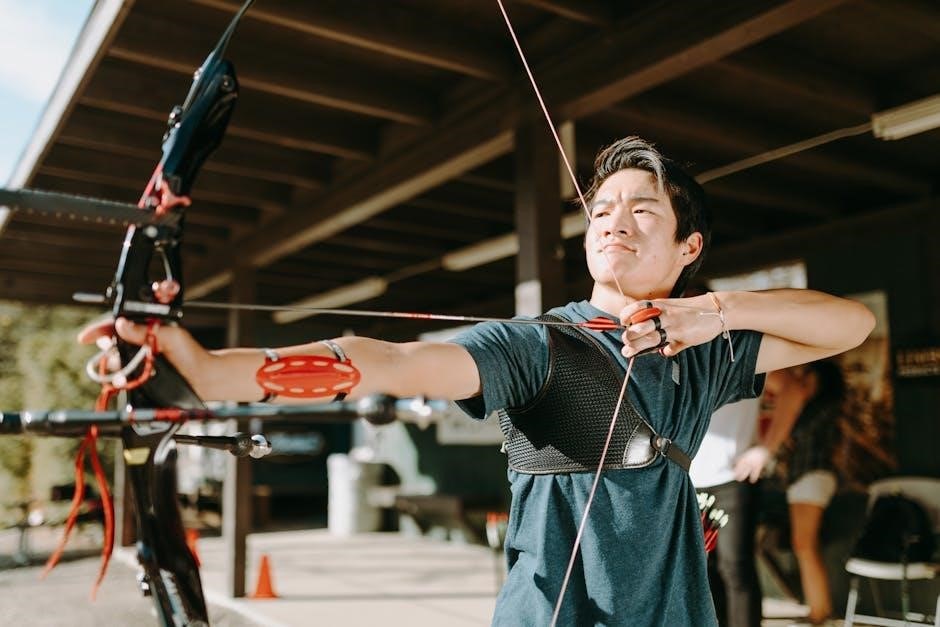
Legal and Ethical Considerations
Semi-guided elk hunts require adherence to local regulations, ensuring fair chase and humane practices to promote sustainable hunting and respect for wildlife and their habitats․
Understanding Hunting Regulations
Regulations for semi-guided elk hunts vary by state and require hunters to obtain proper licenses and permits․ Seasons are strictly defined, with specific bag limits and weapon restrictions․ Hunters must familiarize themselves with local laws to ensure compliance, avoiding penalties․ Understanding land access rules, especially on public versus private land, is crucial․ Additionally, knowledge of tagging procedures and harvest reporting is essential․ Adhering to these regulations ensures sustainable hunting practices and maintains healthy elk populations while promoting a fair and ethical hunting experience for all participants․
Importance of Fair Chase and Ethical Hunting
Fair chase and ethical hunting are cornerstones of semi-guided elk hunts, ensuring respect for the animal and the environment․ Fair chase requires that elk have a reasonable opportunity to escape, promoting a challenging yet honorable hunt․ Ethical practices include clean kills, minimizing waste, and avoiding unnecessary stress on the animal․ These principles uphold conservation efforts, maintain healthy elk populations, and foster a deeper connection between hunters and nature․ By adhering to these guidelines, hunters preserve the integrity of the sport and contribute to sustainable wildlife management․

Top Locations for Semi-Guided Elk Hunts
Colorado, Wyoming, Montana, and New Mexico are premier destinations for semi-guided elk hunts, offering abundant elk populations and diverse terrain, from dense forests to open meadows․
Best States for Elk Hunting
Colorado, Wyoming, Montana, and New Mexico are top destinations for elk hunting, offering vast public lands and healthy elk populations․ Colorado’s Rocky Mountains provide ideal elk habitats, while Wyoming’s wilderness areas are renowned for trophy bulls․ Montana’s diverse terrain, from forests to meadows, supports strong elk herds․ New Mexico’s public and private lands also offer excellent hunting opportunities․ These states combine accessible terrain with abundant wildlife, making them top choices for semi-guided elk hunts․
Public vs․ Private Land Hunting
Public lands offer vast, accessible areas for elk hunting, providing adventurers with opportunities to explore undeveloped territories․ Private lands, however, often guarantee exclusivity and better-managed habitats, increasing chances of success․ Public lands require more effort to locate elk herds, while private properties may offer guided support and improved logistics․ Hunters seeking a more independent experience often prefer public lands, whereas those prioritizing convenience and higher success rates lean toward private land hunting․ Both options cater to different preferences and skill levels in semi-guided elk hunts․
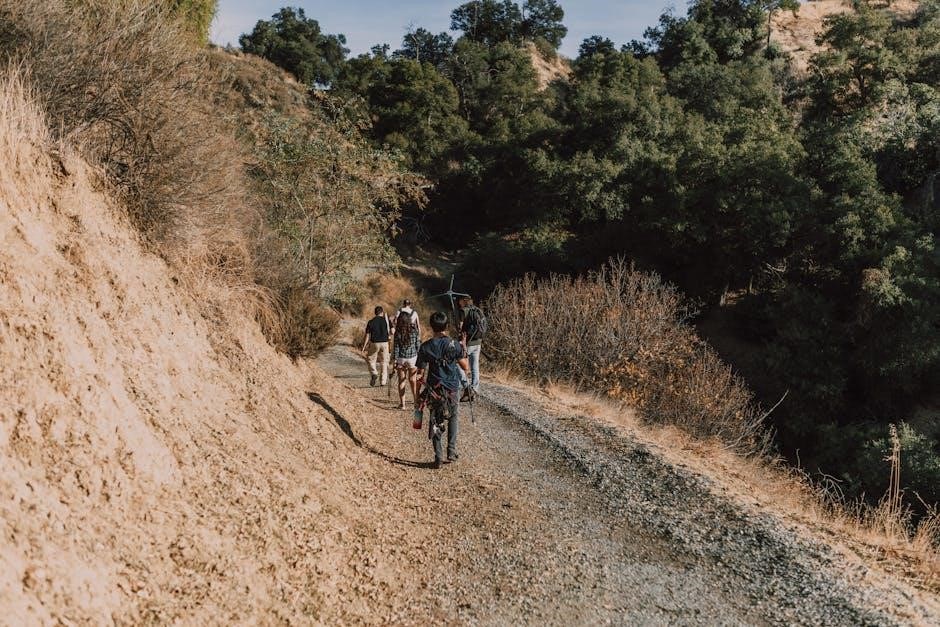
Costs and What to Expect
Semi-guided elk hunts vary in cost depending on location, services, and trip duration․ Expect to pay between $1,000 to $5,000, with packages including gear, permits, and limited guide support․
Breaking Down the Costs
The costs of semi-guided elk hunts typically include a base fee, licenses, permits, and gear rentals․ Expect an initial deposit to secure your spot, with the remainder due before the hunt․ Additional expenses may cover travel to the location, lodging, and food․ Guides or outfitters may charge separately for their expertise and support during the hunt․ Personal gear, such as rifles or archery equipment, is usually the hunter’s responsibility․ Overall, the total cost reflects the balance between guided support and hunter independence in this unique hunting experience․
What’s Included in a Typical Package
A typical semi-guided elk hunt package includes access to private or public hunting grounds, pre-scouted locations, and basic guidance from experienced staff․ Accommodations like cabins or campsites are often provided, along with meals or meal plans․ Transportation to and from hunting areas may be included, depending on the outfitter․ Some packages offer essential gear rentals, such as tree stands or blinds, while others may provide field dressing and trophy preparation services․ The specifics vary by outfitter, but expect a structured yet flexible experience tailored to enhance your hunting success․
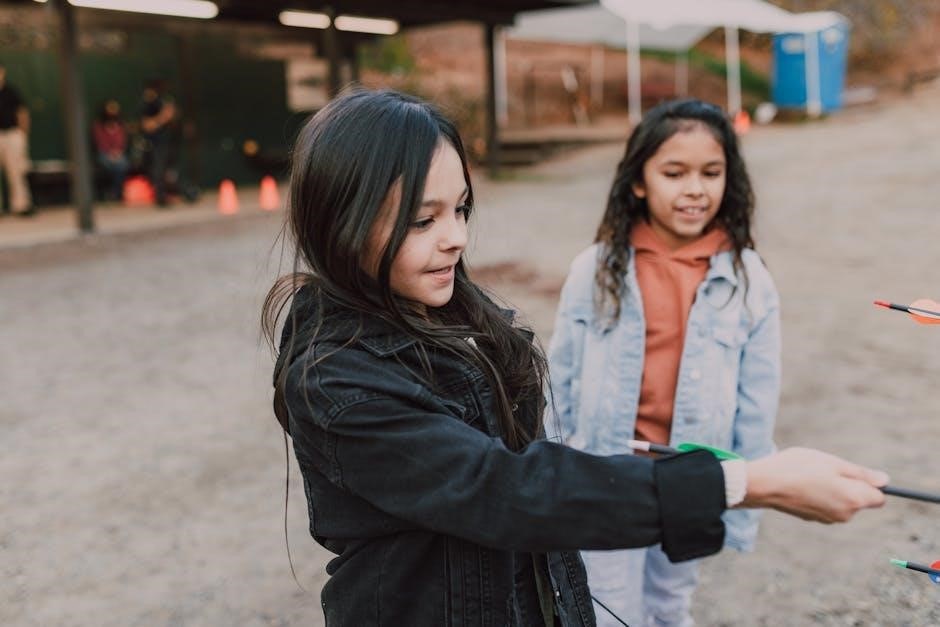
Licensing and Permits
Obtaining the correct elk hunting licenses and permits is essential, often requiring applications through state lotteries or direct purchase, with additional tags or stamps for specific seasons or areas․
How to Obtain Elk Hunting Licenses
Obtaining elk hunting licenses typically involves applying through state wildlife agencies․ Research the specific requirements for your target state, as rules vary․ Many states use lottery systems for limited-entry hunts, while others offer over-the-counter licenses․ Apply well before deadlines, often months in advance, and ensure you meet residency, age, and hunter education requirements․ Some states also use preference point systems to prioritize applicants․ Once drawn or approved, purchase the license and any necessary tags or stamps․ Outfitters often assist with navigating this process for semi-guided hunts․
Tags, Stamps, and Additional Requirements
Beyond the elk hunting license, tags and stamps are often required to legally harvest an elk․ These may include habitat stamps or conservation permits․ Some states require additional tags for specific elk species or hunting zones․ Non-resident hunters may face different requirements than residents, including higher fees․ Ensure all paperwork is completed and carried during the hunt․ Outfitters can assist with understanding these requirements, but it’s crucial to verify with the state wildlife agency to avoid penalties․

Tips for Success in Semi-Guided Elk Hunts
Pre-scout locations, practice elk calls, and maintain physical fitness․ Use scent control, stay patient, and follow guide advice to maximize your hunting success and enjoyment․
Pre-Hunt Scouting and Planning
Pre-hunt scouting and planning are crucial for success in semi-guided elk hunts․ Identify elk habitats, track patterns, and mark potential locations on maps․ Use trail cameras and consult with guides to pinpoint active areas․ Plan your approach based on wind direction, terrain, and elk behavior․ Utilize GPS and mapping apps to navigate effectively․ Scout during the same time of day as the hunt to mimic conditions․ This preparation ensures you’re well-positioned to locate and engage elk, maximizing your chances of a successful hunt while working within the semi-guided framework․
Using Technology and Tools
Technology and tools play a vital role in enhancing semi-guided elk hunts․ GPS devices and mapping apps help navigate vast territories, while trail cameras monitor elk activity․ Range finders ensure accurate distance measurements, crucial for both archery and rifle hunting․ Electronic elk calls mimic realistic sounds, attracting bulls effectively․ Binoculars and spotting scopes aid in scouting from a distance․ By leveraging these tools, hunters can locate elk more efficiently, make precise shots, and increase their chances of success․ These technologies complement traditional skills, ensuring a strategic and effective hunting experience․
Importance of Scent Control
Scent control is critical in semi-guided elk hunts, as elk possess a keen sense of smell․ Minimizing human odor reduces the risk of detection, increasing chances of success․ Hunters should use scent-blocking sprays, wash clothes in unscented detergent, and shower with scent-free products before hunting․ Storing gear in scent-neutral environments and avoiding strong foods or perfumes further helps․ By managing scent effectively, hunters can approach elk undetected, creating opportunities for closer shots․ This strategic approach enhances the overall hunting experience and improves success rates in the field․
Booking and Planning Your Hunt
Booking early ensures preferred dates and outfitters, while detailed planning guarantees a seamless experience․ Research locations, permits, and logistics to prepare effectively for your semi-guided elk hunt adventure․
When to Book Your Hunt
Booking a semi-guided elk hunt requires careful timing to ensure availability, optimal conditions, and compliance with regulations․ Research the specific area’s season dates, permit requirements, and guide availability․ Consider weather patterns and elk behavior, such as during the rut or migration periods, to maximize success․ Additionally, factor in personal preparedness, including physical conditioning and gear readiness․ Booking early can secure preferred dates and guides, but allow flexibility for any changes in plans or permits․ Ensure alignment with personal commitments and schedules for a seamless experience․
Planning the Logistics
Planning the logistics for a semi-guided elk hunt involves coordinating transportation, lodging, and gear while ensuring alignment with the outfitter’s schedule․ Research local travel options, including flights and rental vehicles, to reach the hunting location efficiently․ Confirm the itinerary with your outfitter, including arrival and departure dates, meeting points, and camp arrangements․ Organize essential gear, such as clothing, optics, and weaponry, tailored to the terrain and weather․ Secure accommodations pre- and post-hunt, and ensure all legal documents, like licenses, are in order․ Flexibility is key, as plans may need adjustment based on weather or elk movement․
Semi-guided elk hunts offer a perfect blend of guidance and independence, providing hunters with a challenging yet rewarding experience in nature, fostering growth and unforgettable memories․
Final Thoughts on Semi-Guided Elk Hunts
Semi-guided elk hunts strike a perfect balance between professional guidance and personal independence, offering hunters a unique opportunity to test their skills while gaining valuable insights․ These hunts foster perseverance, adaptability, and a deeper connection with nature․ Hunters leave with unforgettable memories, enhanced knowledge, and a renewed respect for the wilderness․ The experience is as much about personal growth as it is about harvesting an elk, making it a rewarding adventure for those seeking both challenge and camaraderie in the great outdoors․
Next Steps for Your Hunting Adventure
After deciding on a semi-guided elk hunt, the next steps involve meticulous planning and preparation․ Research top locations, compare outfitters, and book early to secure prime spots․ Begin physical conditioning and gear preparation to ensure readiness․ Engage with hunting communities for tips and insights․ Consider a pre-hunt scouting trip to familiarize yourself with the terrain․ Finally, complete licensing requirements and finalize logistics to ensure a smooth and successful adventure․ These steps will set you up for an unforgettable experience in the wilderness․
